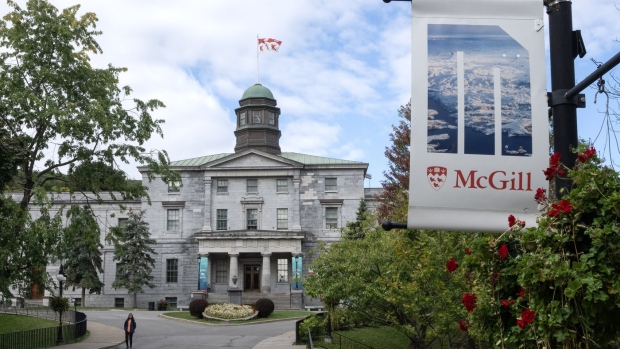A group representing Canadian retirees is urging federal and provincial governments to protect the Canada Pension Plan as Alberta considers an exodus from the national program.
In an open letter to federal, provincial and territorial finance ministers ahead of their Friday meeting in Toronto, the Canadian Association of Retired Persons said “protecting the value and integrity of our pensions” is top of mind.
It called on the government officials to “step up to protect the national pension plan.”
“Older Canadians across the country are deeply worried by the Government of Alberta’s plan to undermine the integrity of the CPP,” the letter from CARP executive Bill VanGorder said.
“Its proposal that contemplates walking off with more than half the CPP’s accumulated value to create a new provincial scheme is reckless.”
He added that the “retirement security of seniors, including those residing in Alberta, is in question” in light of the Prairie province’s proposal.
“If it were to play out as intended, it could have huge impacts on the rest of the country. Already the idea spreads anxiety and uncertainty among seniors who fear their life’s contributions are at risk.”
Alberta has been considering a plan to leave the national pension plan and instead create its own provincial pension plan, similar to Quebec and Saskatchewan.
A study funded by Alberta’s government found the province could be entitled to $334 billion if it were to leave the national plan, more than half of the plan’s assets. Experts and analysts have disputed the figure.
Last week, Alberta Premier Danielle Smith cut off debate in the provincial legislature to pass a bill mandating a referendum on its plan for the Canada Pension Plan.
Provinces are free to leave the plan, but must give three years’ notice.
Still, VanGorder questioned why any province would want to go it alone.
“Seniors in Canada are part of a national pension plan that has become the envy of the world,” the letter said. “It is well managed and supported by one of the best performing institutional investors globally.”
Alberta’s pension proposal is not specifically mentioned on the agenda for the finance ministers’ meetings, which are meant to “discuss shared priorities such as housing, affordability, and economic growth,” according to a release from the federal government.
With files from The Canadian Press
Citing the "complicated" nature of pensions and need for all provinces and territories to weigh in, Finance Minister Chrystia Freeland would not provide a specific timeline for determining how much Alberta would be entitled to if it leaves the Canada Pension Plan.
Speaking after a meeting with her provincial and territorial counterparts, Freeland said officials reported back to the group Friday about the work involved with arriving at the number, which she requested from the chief actuary in November.
Those officials suggested they needed to meet again in January to discuss progress, "and we all agreed that was a good idea," she said.
The ministers held a special meeting last month to discuss Alberta Premier Danielle Smith's push to quit the Canada Pension Plan for an Alberta-only version.
Smith began her push to exit CPP in September, when she released a Lifeworks report estimating Alberta is entitled to $334 billion, or 53 per cent, of the Canada Pension Plan if it starts its own pension program.
Other economists, including those with the Canada Pension Plan Investment Board, believe Alberta's share is closer to its percentage of the CPP membership, at about 15 per cent.
To settle the debate, Freeland is seeking a number from the chief actuary, but when pressed Friday about whether it could take months or even until summer to arrive at that figure, she offered no timeline.
"I learned during the North American Free Trade Agreement negotiations never to answer hypothetical questions. It's not a good idea for an elected political leader," she said.
"What I think was very clear in the conversation today, when we heard back from officials was how technical this work is ... we agreed that we're going to do the work and define the tasking very carefully, very deliberately and crucially, really transparently."
Freeland said some ministers were "emotional" talking about the pension issue because many people are anxious about it and the certainty of receiving a pension is a "huge comfort" to Canadians.
Asked about the pension portions of the meeting, Alberta Finance Minister Nate Horner said, "I am pleased Minister Freeland agreed that the chief actuary should rely on their own legal analysis and not what the federal government says."
"The decision to move forward with an Alberta pension plan is up to Albertans," he wrote in a statement.
Freeland said in her remarks that any province or territory can leave the federal pension plan.
"There's no debate about that," she said.
"The federal government's contention, though, is first and foremost that we have a great system. We have a system that works, which actually is the envy of the world."
After the day's meeting wrapped up, Ontario Finance Minister Peter Bethlenfalvy said conversations around the pension issue had been "very collaborative."
"Alberta being in the pension plan... is good for Alberta, it's good for Canada, it's good for Ontario," he said.
"So we're going to continue pushing that we have a process that's clear, that's timely, that's deliberate and thoughtful."
But before the meeting began, Saskatchewan Finance Minister Donna Harpauer downplayed the need to take care of the pension issue immediately.
"That's a very long process and it's not what is pressing and urgent today," she told reporters as she headed into the meeting.
On top of Alberta's pension push, provincial and territorial ministers along with Freeland said they also discussed housing, inflation and the economy.
Also on hand for the meeting was Bank of Canada governor Tiff Macklem, who provided the ministers with an update on the country's economic outlook.
This report by The Canadian Press was first published Dec. 15, 2023.




